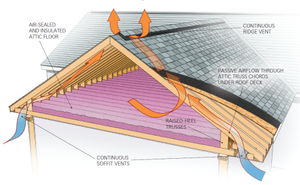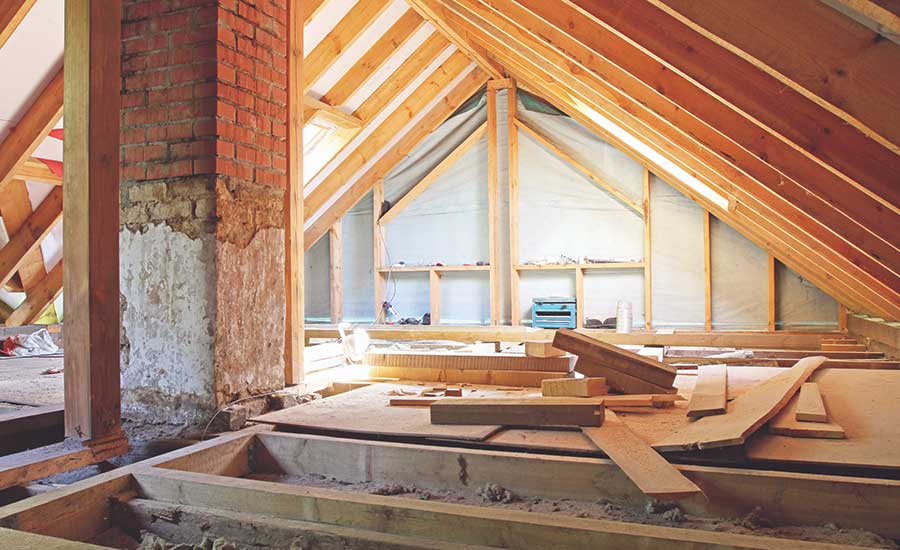Proper attic ventilation is a crucial aspect of maintaining a healthy home. Many homebuyers overlook the importance of attic ventilation, but it can significantly impact your house’s structural integrity and energy efficiency. Here’s a rundown of how attic ventilation should work and what can happen if it’s not up to par.
Attic ventilation works on a simple principle of air movement: warm air rises, and cool air enters to replace it. This airflow helps regulate the temperature in your attic and, by extension, your entire home. Here’s how it should ideally work:
- Intake Vents: Located at the eaves, soffits, or along the roof’s lower edge, intake vents allow cool, fresh air to enter the attic.
- Exhaust Vents: These vents, located near or at the roof’s peak, allow hot, moist air to escape.

- Temperature Regulation: Keeps your home cooler in the summer and prevents ice dams in the winter.
- Moisture Control: Reduces the risk of mold and mildew by reducing moisture build-up.
- Energy Efficiency: Helps your HVAC system run more efficiently, potentially lowering your energy bills.
- Prolonged Roof Life: Reduces heat and moisture stress on roofing materials, extending their lifespan.
If your attic is not properly ventilated, a host of issues can arise, including:
- Increased Energy Costs: Your HVAC system will work harder to maintain a comfortable temperature, driving up energy costs.
- Roof Damage: Excess heat can cause shingles to warp and deteriorate faster, while moisture build-up can lead to rot and structural damage.
- Mold and Mildew: Poor ventilation can result in high humidity levels, fostering the growth of mold and mildew, which can affect indoor air quality and pose health risks.
- Ice Dams: In cold climates, ice dams can form when warm air from an improperly ventilated attic melts snow on the roof, which then refreezes at the eaves and creates water back-up that can lead to leaks and damage.
- Visual Inspection: Check for signs of moisture or mold, particularly in the attic’s corners.
- Temperature Check: Measure the attic temperature. Ideally, it should not be more than 10-20 degrees warmer than the outside temperature.
- Professional Inspection: Have a home inspector or roofing professional evaluate your attic ventilation as part of a routine home inspection.
Understanding attic ventilation and ensuring it functions properly is essential for maintaining a healthy, efficient home. Whether you’re buying a new house or maintaining your current one, make sure to include attic ventilation in your home maintenance checklist.

